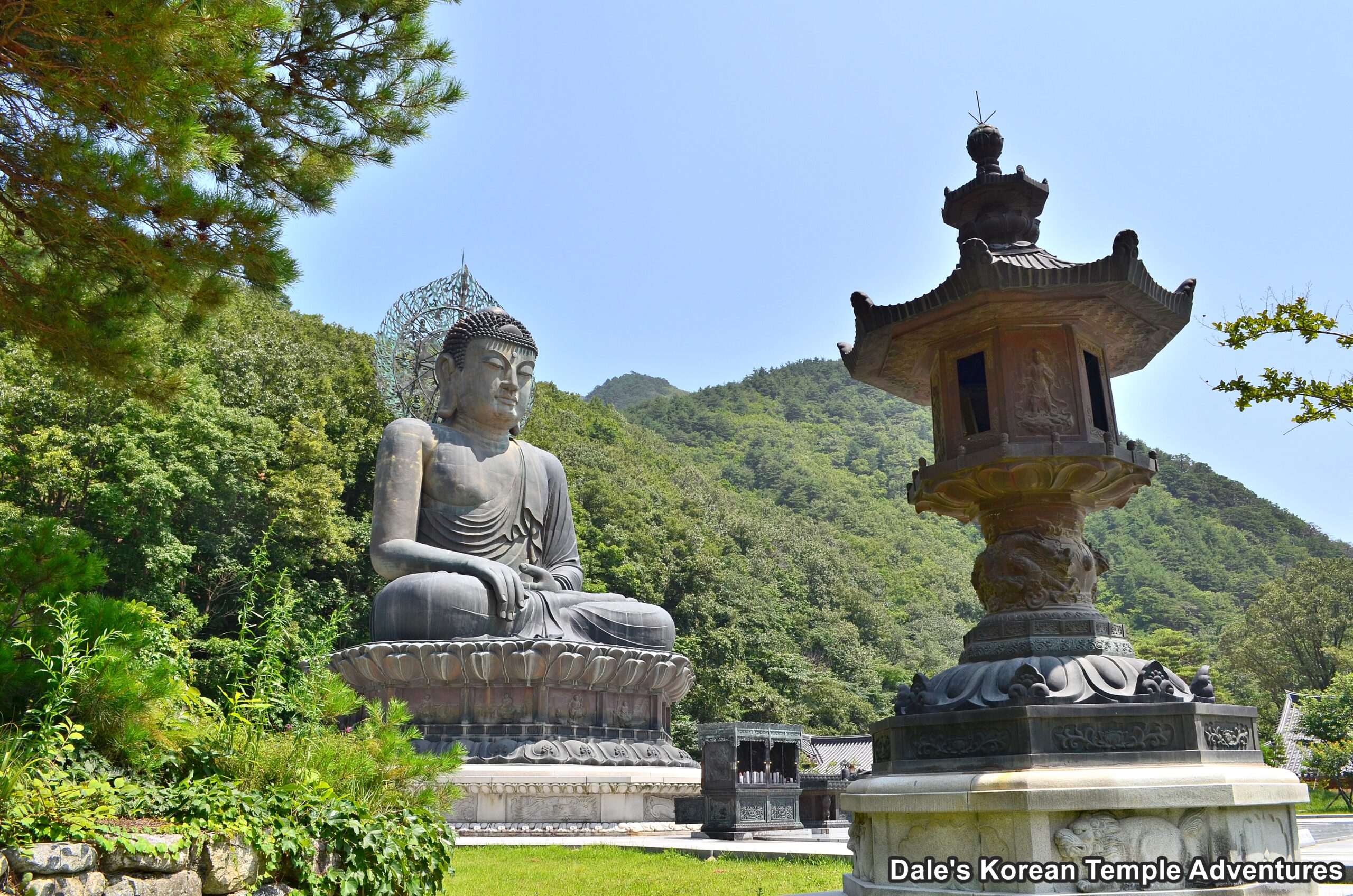
Hello Again Everyone!!
Sinheungsa Temple, which is located in Sokcho, Gangwon-do, is also situated, arguably, in Korea’s most beautiful national park: Seoraksan National Park. Sinheungsa Temple, in English, means “Spirit Arising Temple.” Sinheungsa Temple is believed to have been first built by the famed monk Jajang-yulsa (590-658 A.D.). Originally, the temple was called Hyangseongsa Temple. However, with that being said, there is some dispute as to when it was first built by Jajang-yulsa. It’s been argued that it was first built in 637 A.D. before the famed monk left to study in Tang China. And it’s also been argued that Sinheungsa Temple was built upon Jajang-yulsa’s return to the Korean peninsula in 652 A.D. where the Kensington Hotel is presently located. The temple was then destroyed by fire in 698 A.D. Three years later, in 701 A.D., Sinheungsa Temple was rebuilt by another famous monk, Uisang-daesa (625-702 A.D.). The temple was rebuilt on the site of Neunginam Hermitage, which is the present location of Naewonam Hermitage. Uisang-daesa also renamed the temple, at this time, to Seonjeongsa Temple.
For nearly one thousand years, the temple flourished until it was eventually destroyed by fire, again, in 1642. According to myth, after most of the monks at the temple left after the fire of 1642, there were three monks, Yeongseo, Hyewon, and Yeonok who vowed that they would rebuild the temple one day. So they passionately prayed everyday so that they could rebuild Sinheungsa Temple. After praying one day, a silver-haired deity appeared to them in their dreams. The deity pointed to the ground where the temple is currently situated and said, “If you build a temple here, there will be no damage from the three major disasters of fire, floods, or storms.” Afterwards, this deity disappeared. With this thought in mind, the three monks re-built Sinheungsa Temple, for which it stands to this day.
In total, Sinheungsa Temple has two Korean Treasures, and it also participates in the popular Temple Stay program.
You first approach Sinheungsa Temple through the very scenic, and often very busy, Seoraksan National Park. The first structure to greet you at the temple is the top heavy Iljumun Gate, or “One Pillar Gate,” in English. Having passed through this entry gate, you’ll notice the sharp, jagged rocks of Mt. Seoraksan (1708 m) surrounding you on all sides. You’ll also come across the 14.6 metre tall, bronze statue dedicated to Seokgamoni-bul (The Historical Buddha). The statue is made from one hundred and eight tons of gilt-bronze, and it’s stands on a 4.3 metre lotus pedestal. In total, the statue cost 3.8 billion won to build, raised through the contributions of over 300,000 anonymous donors over a decade in duration. The total height of the statue is 18.9 metres tall, and it’s called the “Tongil Daebul.” The bronze statue of Seokgamoni-bul’s head is surrounded by a beautiful nimbus, and the forehead of the Buddha is adorned with eight 8-centimetre stones of amber and a single piece of jade that has a diameter of ten centimetres. The massive bronze statue is also positioned in the “Touching the Earth Mudra,” or the “Earth Witness Mudra,” which was the pose the Buddha had when he attained enlightenment. Housed inside the hollow statue are three pieces of Seokgamoni-bul’s sari (crystallized remains) that were donated by the Myanmar government, as well as the Tripitaka, which are the original Buddhist scriptures. These three sari are backed by three incarnations of Gwanseeum-bosal (The Bodhisattva of Compassion). The statue of Seokgamoni-bul at Sinheungsa Temple was built with the wish that one day the Korean peninsula would be reunified. The statue of the Buddha sits serenely looking out on the amazing landscape of northern South Korea. And the statue is fronted by beautiful bronze incense burners and lanterns.
When you’ve finally had your fill of this amazing statue, which might take you some time, you’ll make your way up a path for two to three hundred metres. Having crossed the Hyeonsu-gyo Bridge, the main temple grounds at Sinheungsa Temple will be awaiting you. And first up is the rather boxy Cheonwangmun Gate which houses some excellent examples of the Four Heavenly Kings. With intimidating expression, they welcome all those that dare enter the temple grounds. Exiting out on the other side of the Cheonwangmun Gate, you’ll next encounter the Boje-ru Pavilion that acts as a screen that hides the rest of the inner portion of the temple grounds at Sinheungsa Temple.
Watching your head so that you don’t smack it up against the ceiling of the low-lying Boje-ru Pavilion as you pass under it, you’ll finally enter the main temple courtyard. Straight ahead is the Geukrakbo-jeon Hall, which acts as the temple’s main hall. The stairs leading up to the Geukrakbo-jeon Hall are decorated with some ancient Gwimyeon reliefs, while the exterior walls to this hall are adorned with a colourful set of Shimu-do, Ox-Herding Murals. As for the interior, it’s elaborately decorated with a triad of statues centred by Amita-bul (The Buddha of the Western Paradise) on the main altar. This statue is joined on either side by Gwanseeum-bosal and Daesaeji-bosal (The Bodhisattva of Wisdom and Power for Amita-bul). This triad is also Korean Treasure #1721. The triad dates back to 1651. The creator of the triad was the monk Muyeom. Alongside the monk Hyeonjin, they were the leading monk sculptors of the mid-17th century. The statues are proportionate in size, which speaks to the harmony of these Buddhist statues. Overall, the three statues seem simple, yet refined, in appearance.
To the left rear of the Geukrakbo-jeon Hall are a pair of halls. The first is the Myeongbu-jeon Hall that houses a statue of Jijang-bosal under a beautiful red canopy. The triad on the main altar of the Myeongbu-jeon Hall, which is centred by Jijang-bosal, is Korean Treasure #1749. Like the triad inside the Geukrakbo-jeon Hall, this triad was also made by the monk Muyeom. And these sculptures, too, were produced in 1651. Interestingly, there were various artists that participated in the production in separate procedures of the statues including the molding, gilding, and colouring of the three statues.
And to the rear of the Myeongbu-jeon Hall is the Samseong-gak Hall. The most interesting mural in this shaman shrine hall, which includes images of Chilseong (The Seven Stars), Dokseong (The Lonely Saint), and Sanshin (The Mountain Spirit), is the modern Sanshin Taenghwa.
Admission to Seoraksan National Park, where Sinheungsa Temple is located, is 2,500 won. Sinheungsa Temple itself is free.
HOW TO GET THERE: From the city of Sokcho, Gangwon-do, you’ll need to take a bus bound for Seoraksan National Park. The bus leaves every ten minutes, and the bus ride should last around twenty to twenty-five minutes. From where the bus drops you off at the entrance of the park, you’ll need to walk about ten minutes to get to Sinheungsa Temple.
OVERALL RATING: 9/10. Sinheungsa Temple, without a doubt, is one of the most beautifully situated temples in all of Korea. Seoraksan National Park is breath-taking, and it surrounds you at every turn inside the valley where Sinheungsa Temple is located. In addition to the natural beauty surrounding Sinheungsa Temple, there’s the 18.9 metre tall bronze statue of Seokgamoni-bul. It’s one of the best incarnations of the Buddha on the Korean peninsula. Additionally, the historic, and beautiful, statues that are designated Korean Treasures are something to keep an eye out for when inside the temple shrine halls, as are the statues of the Four Heavenly Kings at the entry of the temple gate.
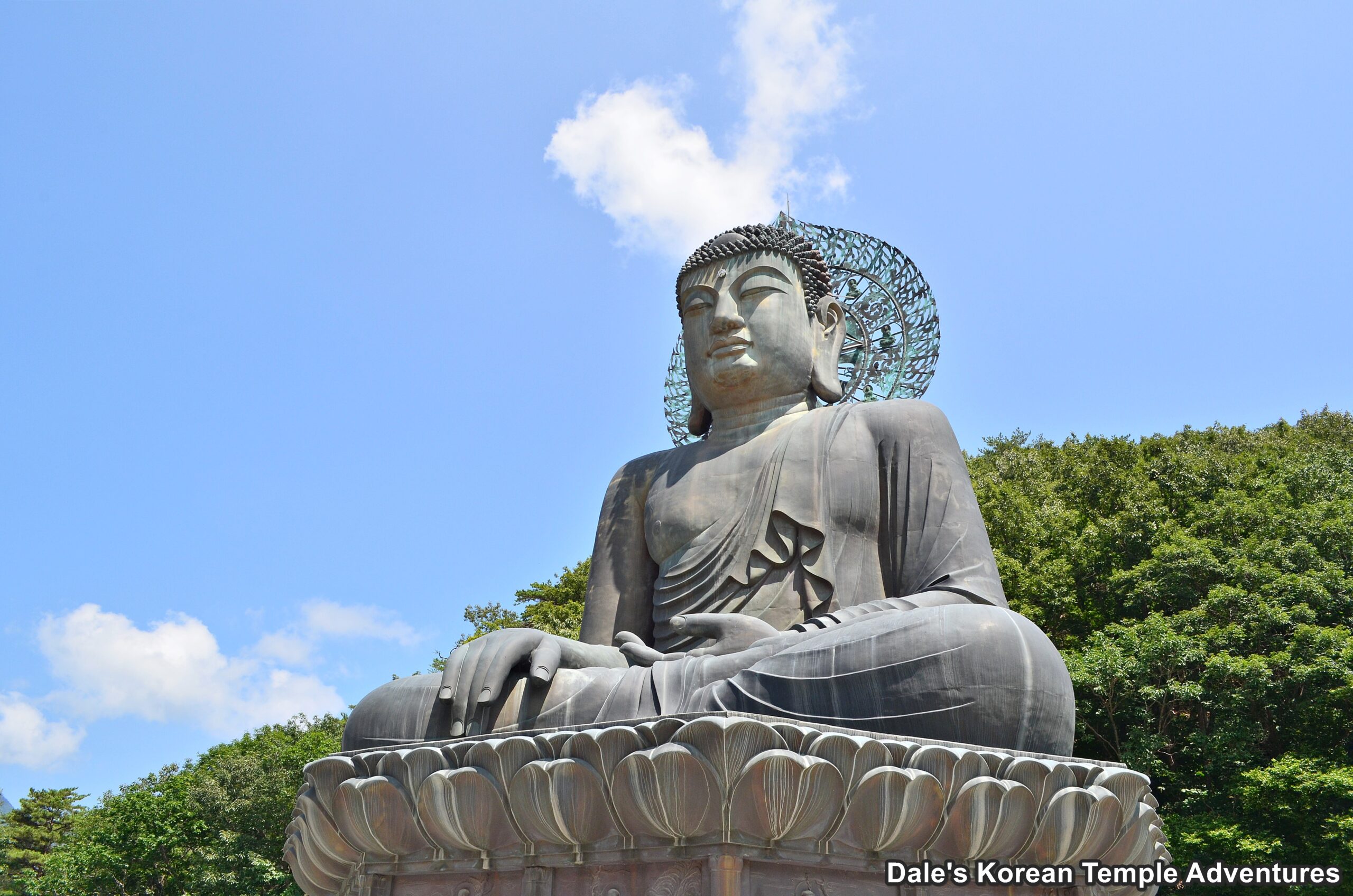
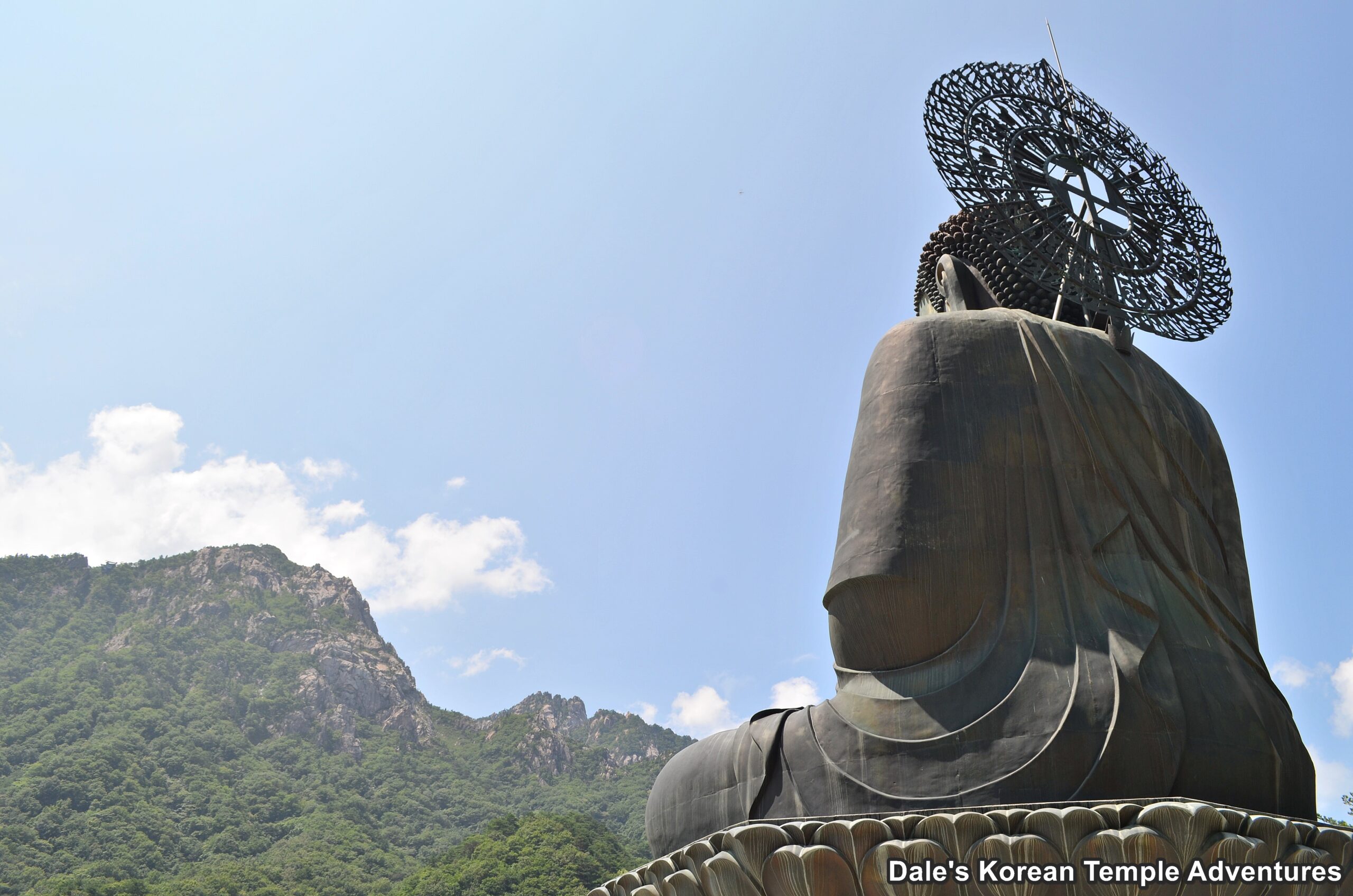

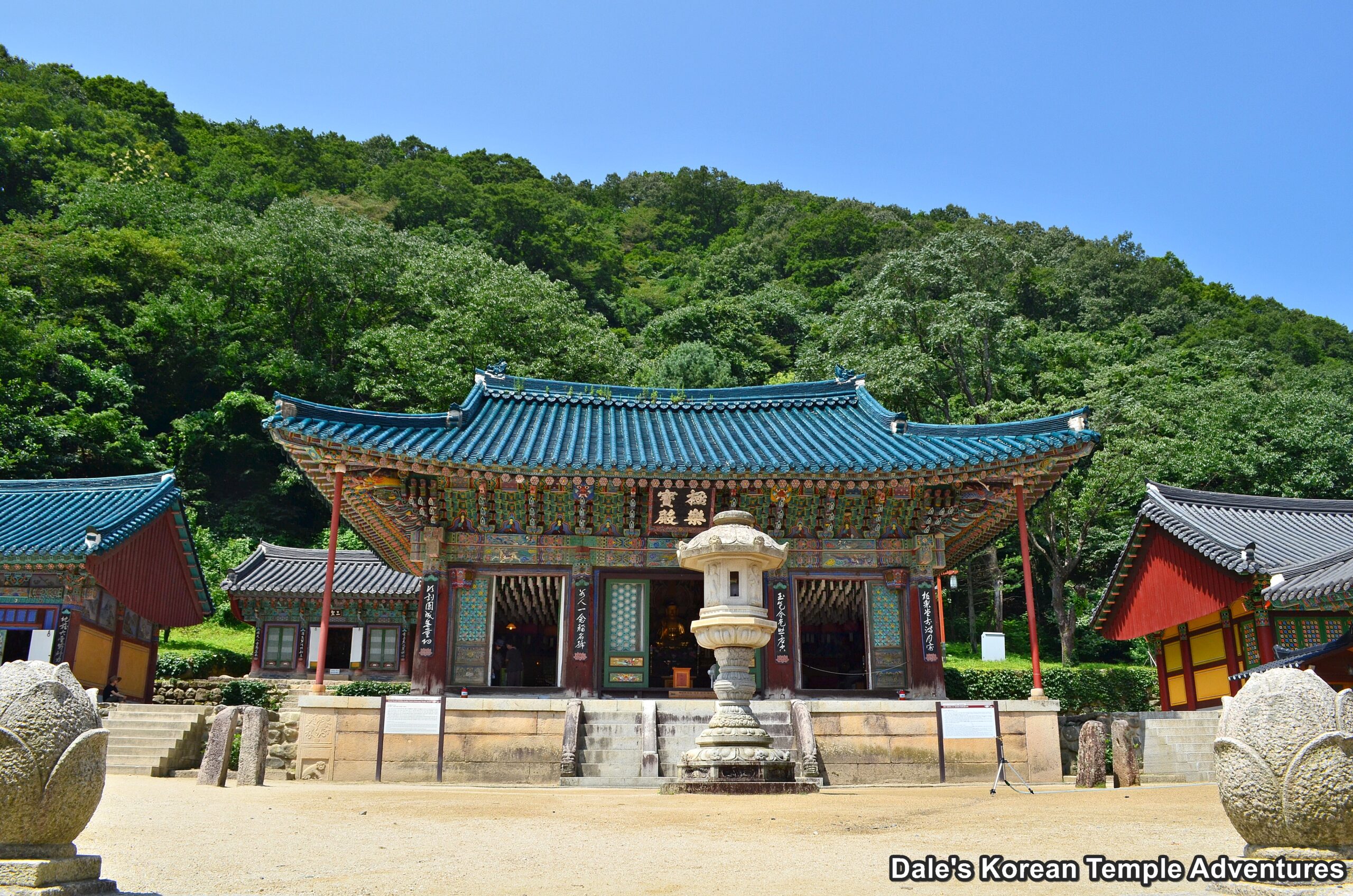
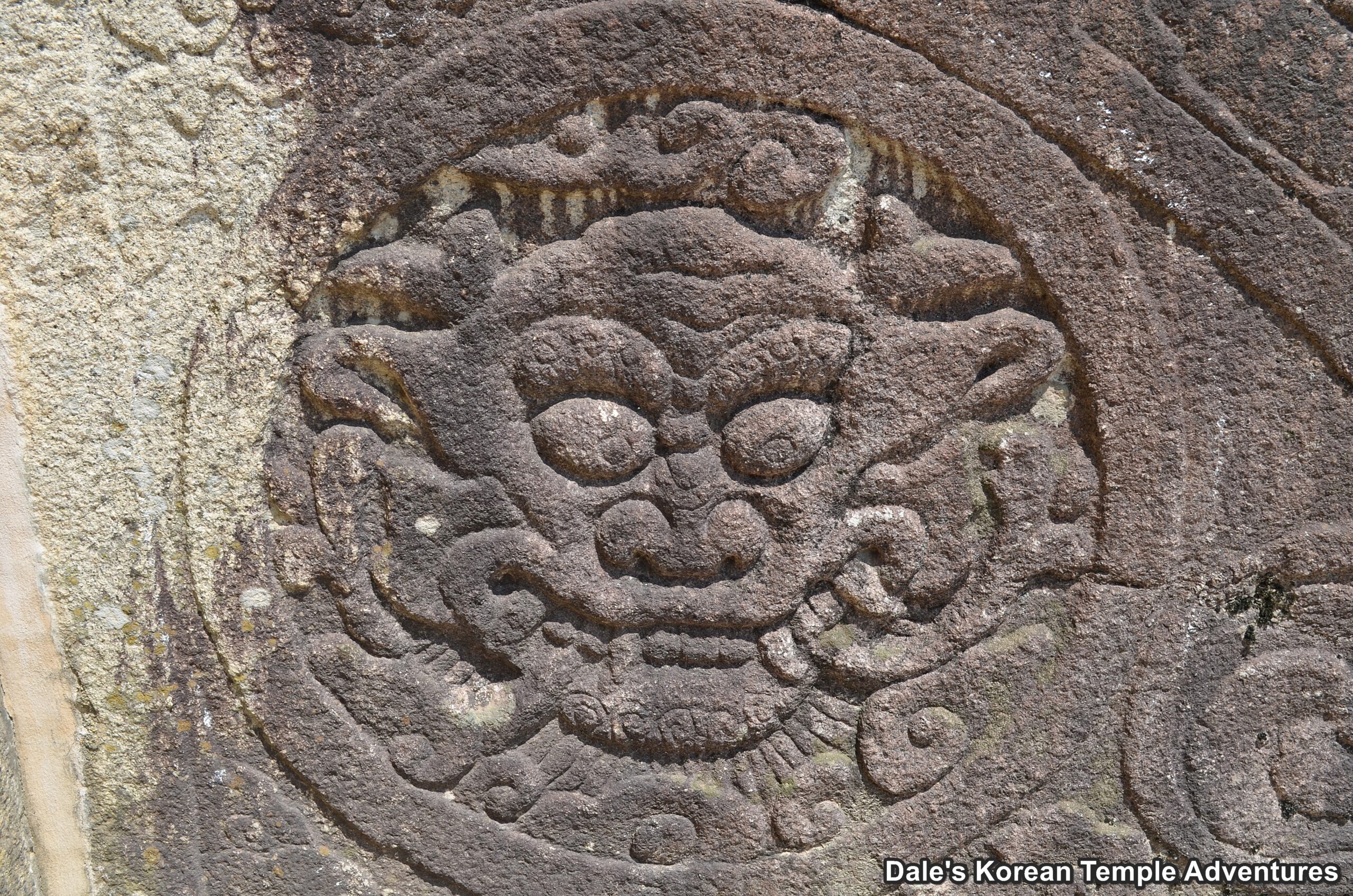
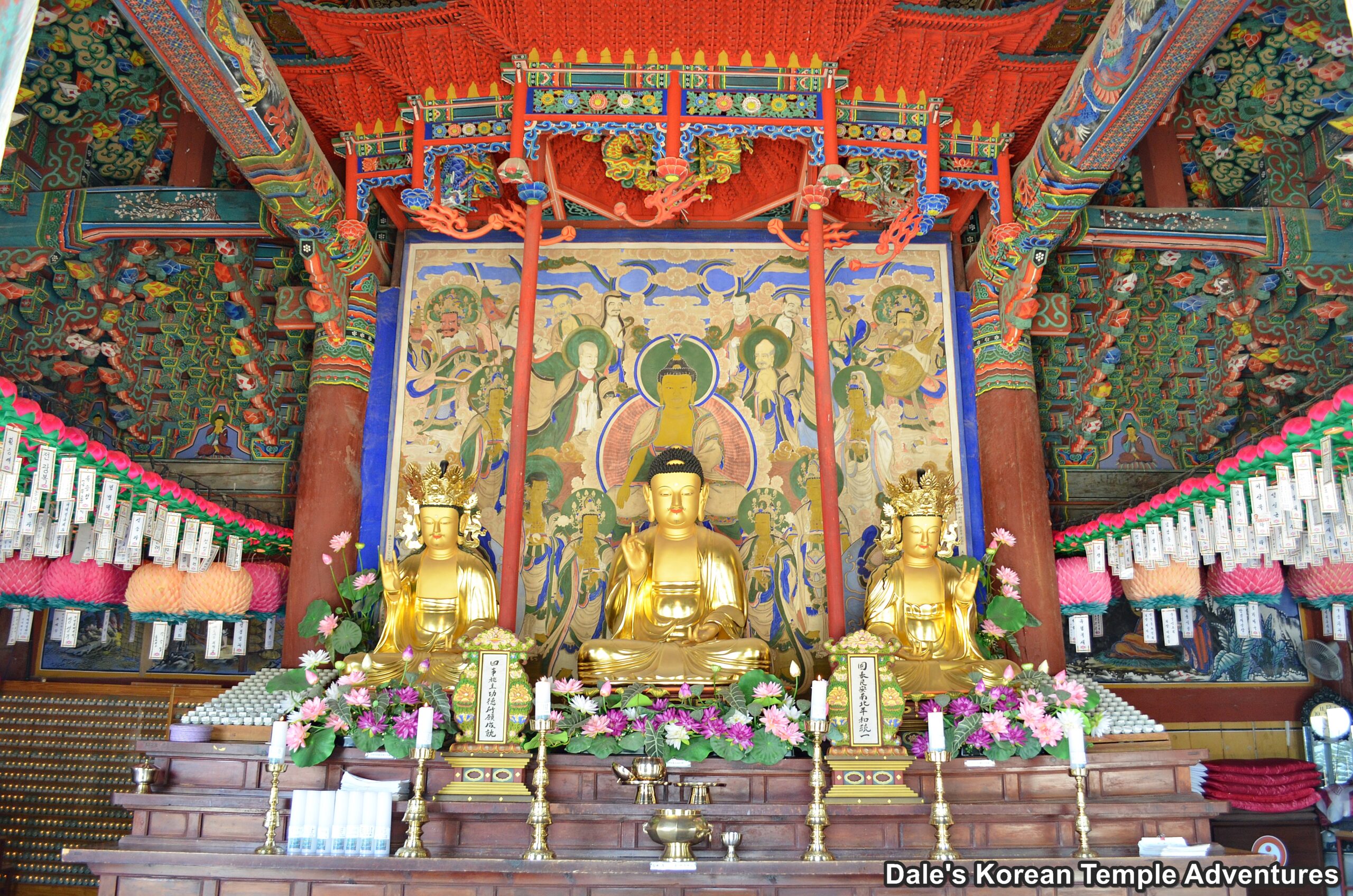
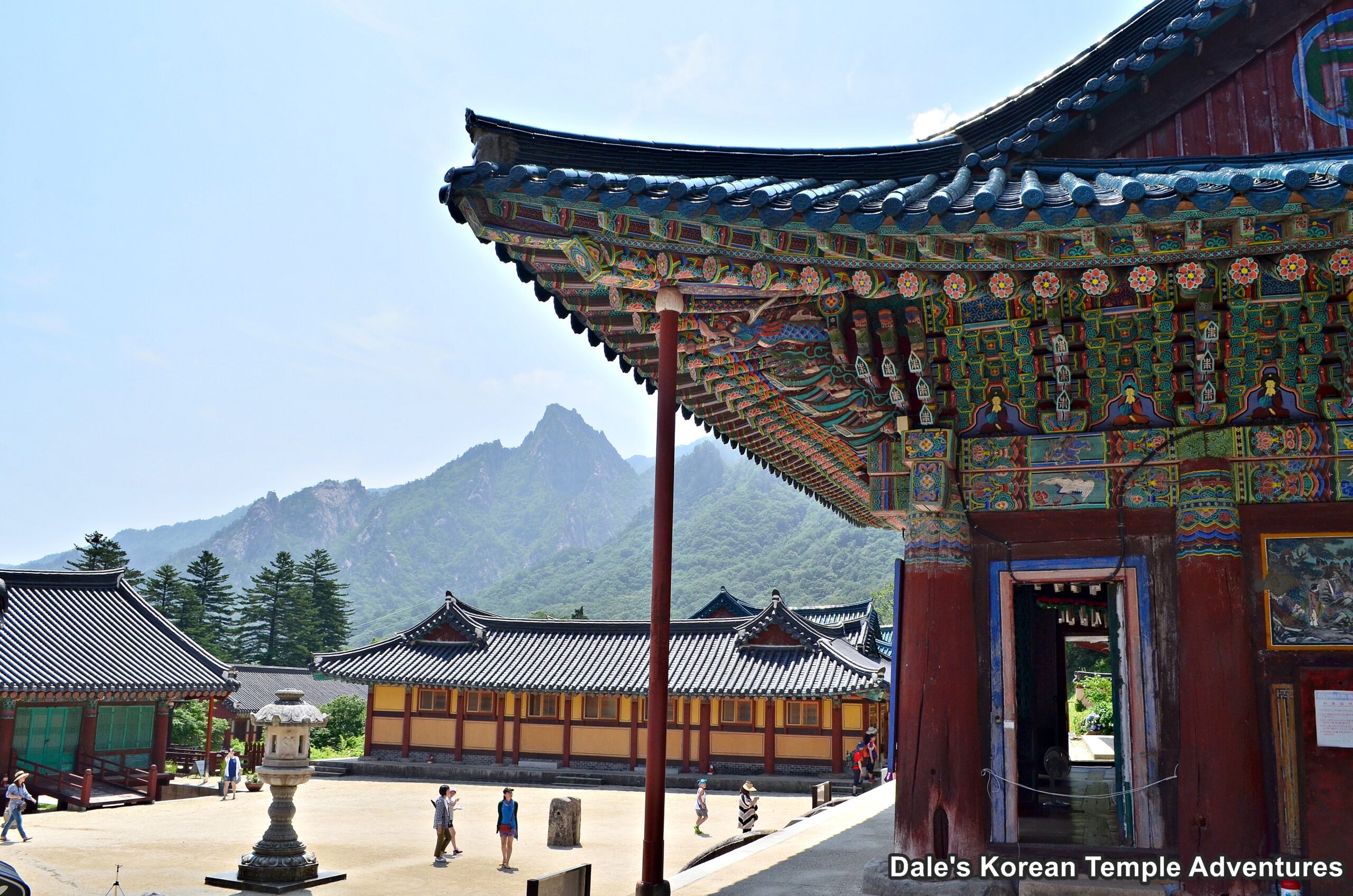
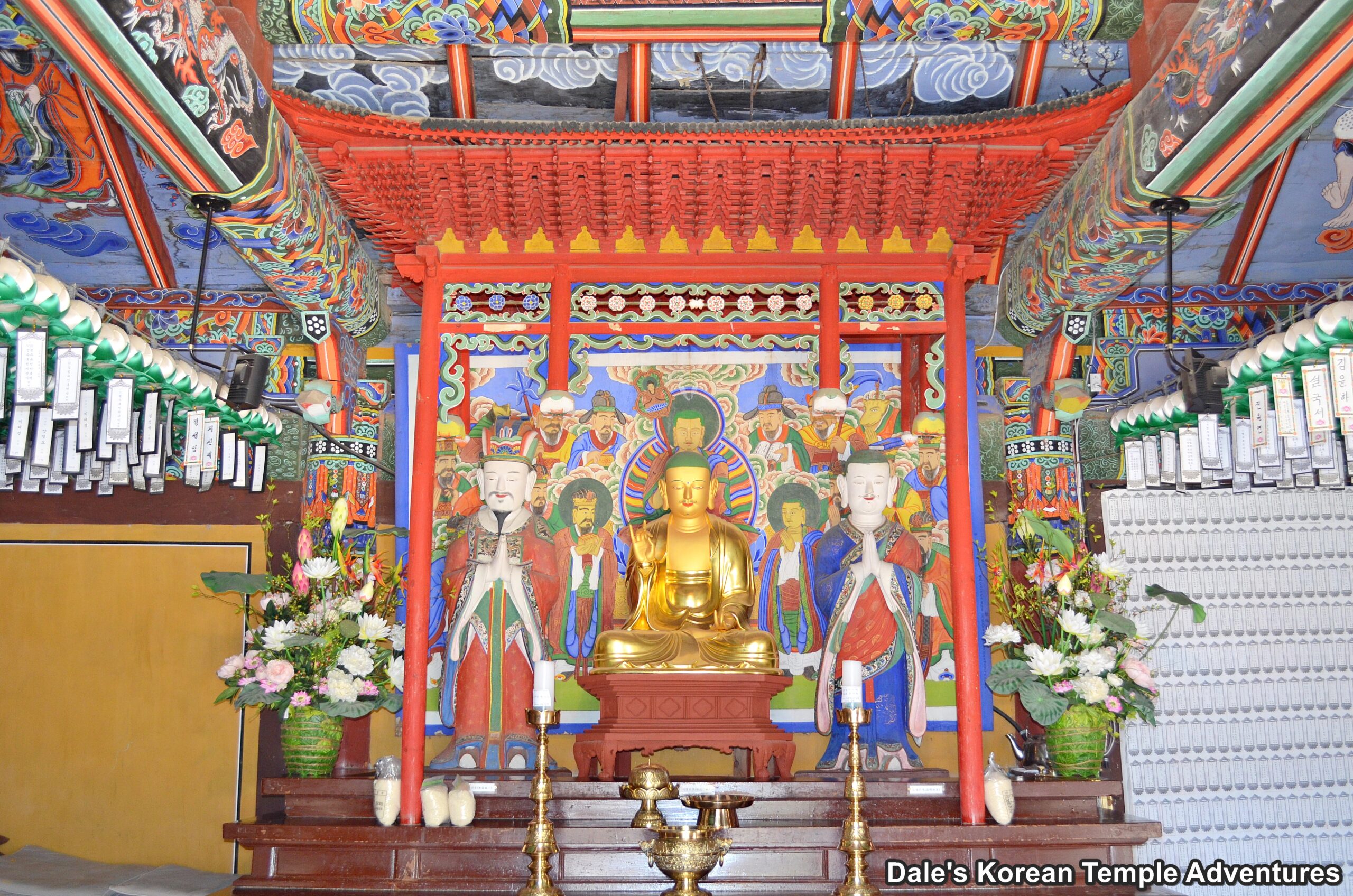



Recent comments